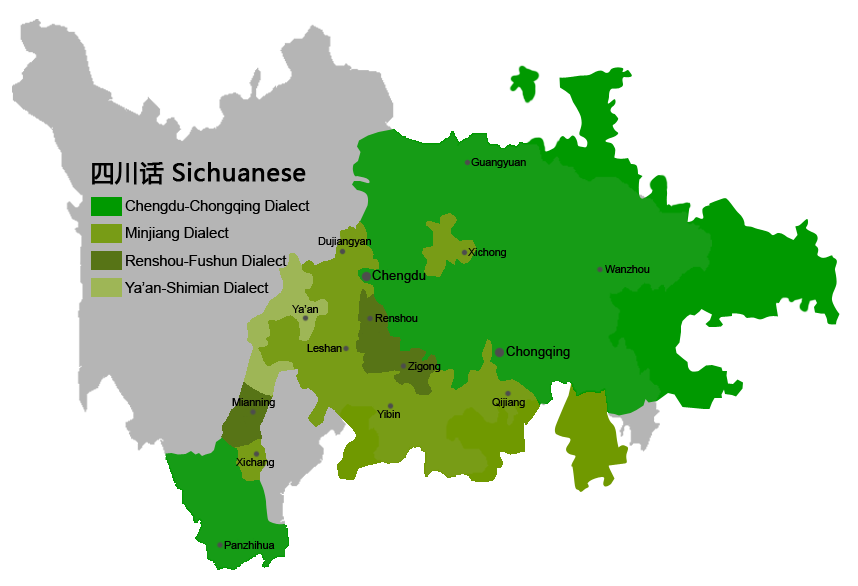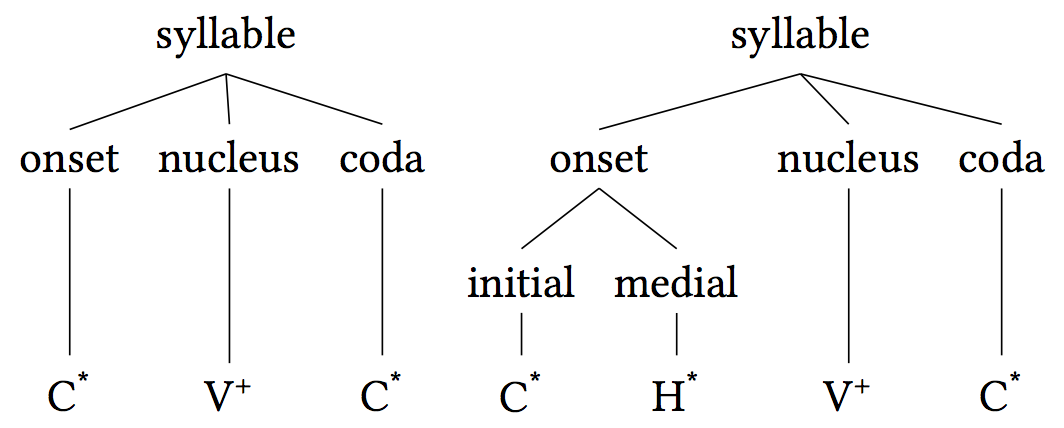|
Baima Language
Baima ( autonym: ') is a language spoken by 10,000 Baima people, of Tibetan ethnicity, in north-central Sichuan Province and Gansu Province, China. Baima is passed on from parents to children in Baima villages. It is spoken within the home domain and is not used in any media of mass communication. Baima uses subject–object–verb (SOV) word order, word-initial consonant clusters and is tonal. It is unclassified within Sino-Tibetan; there are multiple layers of borrowings from Amdo, Khams, and Zhongu Tibetan, as well as lexical and grammatical connections with Qiangic languages. Basic vocabulary is about 85% Tibetic and 15% Qiangic, and the Tibetic words do not link to any established group of Tibetic languages. Chirkova (2008) suggests that the Qiangic vocabulary "might be a retention from the language originally spoken by the Báimǎ before their shift to a form of Tibetic in the 7th century." She accepts Baima as Tibetan, but as an isolate within the Tibetic languages. ... [...More Info...] [...Related Items...] OR: [Wikipedia] [Google] [Baidu] |
China
China, officially the People's Republic of China (PRC), is a country in East Asia. It is the world's List of countries and dependencies by population, most populous country, with a Population of China, population exceeding 1.4 billion, slightly ahead of India. China spans the equivalent of five time zones and Borders of China, borders fourteen countries by land, the List of countries and territories by land borders, most of any country in the world, tied with Russia. Covering an area of approximately , it is the world's third List of countries and dependencies by area, largest country by total land area. The country consists of 22 provinces of China, provinces, five autonomous regions of China, autonomous regions, four direct-administered municipalities of China, municipalities, and two special administrative regions of China, Special Administrative Regions (Hong Kong and Macau). The national capital is Beijing, and the List of cities in China by population, most populous cit ... [...More Info...] [...Related Items...] OR: [Wikipedia] [Google] [Baidu] |
Di (Five Barbarians)
The Di (; < Eastern Han Chinese *''tei'' < ( B-S): *''tˤij'') were an ancient ethnic group that lived in western China, and are best known as one of the non-Han Chinese peoples known as the Five Barbarians that overran northern China during the |
Baima Tibetan Ethnic Township
Baima Tibetan Ethnic Township () is an ethnic township for Tibetan people under the administration of Pingwu County in northern Sichuan province, China China, officially the People's Republic of China (PRC), is a country in East Asia. It is the world's most populous country, with a population exceeding 1.4 billion, slightly ahead of India. China spans the equivalent of five time zones and .... The Baima language, a threatened language with approximately 10,000 speakers, is spoken in the ethnic township. , it has four villages under its administration: *Yiwadaire Village () *Eli Village () *Gaoshinao Village () *Yazhezaozu Village () See also * List of township-level divisions of Sichuan References Township-level divisions of Sichuan Pingwu County Ethnic townships of the People's Republic of China {{Sichuan-geo-stub ... [...More Info...] [...Related Items...] OR: [Wikipedia] [Google] [Baidu] |
Songpan County
Songpan; former Songzhou, is a county of northwestern Sichuan province, China, and is one of the 13 counties administered by the Ngawa Tibetan and Qiang Autonomous Prefecture. It has an area of , and a population of approximately 68,000 composed of Tibetan, Qiang, Han and Hui populations. Transport *China National Highway 213 *Jiuzhai Huanglong Airport Economy and Tourism The economy of Songpan is dominated by agriculture and livestock raising. In recent years, tourism has become an increasingly important sector, and is actively promoted by the authorities. Additionally, Songpan is popular among foreign students and other Chinese language learners staying in China as the base for treks through the scenic mountains nearby. Apart from the scenic attraction of Huanglong Scenic and Historic Interest Area which is located in the county, Songpan with its strategic location also acts as the gateway to Jiuzhaigou Valley at the north. History The ancient city of Songpan was built du ... [...More Info...] [...Related Items...] OR: [Wikipedia] [Google] [Baidu] |
Counties Of China
Counties ( zh, t=縣, s=县, hp=Xiàn), formally county-level divisions, are found in the third level of the administrative hierarchy in Provinces and Autonomous regions and the second level in municipalities and Hainan, a level that is known as "county level" and also contains autonomous counties, county-level cities, banners, autonomous banners and City districts. There are 1,355 counties in Mainland China out of a total of 2,851 county-level divisions. The term ''xian'' is sometimes translated as "district" or "prefecture" when put in the context of Chinese history. History ''Xian'' have existed since the Warring States period and were set up nationwide by the Qin Dynasty. The number of counties in China proper gradually increased from dynasty to dynasty. As Qin Shi Huang reorganized the counties after his unification, there were about 1,000. Under the Eastern Han Dynasty, the number of counties increased to above 1,000. About 1400 existed when the Sui dyn ... [...More Info...] [...Related Items...] OR: [Wikipedia] [Google] [Baidu] |
Endangered Languages Project
The Endangered Languages Project (ELP) is a worldwide collaboration between indigenous language organizations, linguists, institutions of higher education, and key industry partners to strengthen endangered languages. The foundation of the project is website which launched in June 2012. History The ELP was launched in June 2012 with the intention of being a "comprehensive, up-to-date source of information on the endangered languages of the world" according to the director of the Catalogue of Endangered Languages (ELCat), Lyle Campbell, a professor of Linguistics in the Mānoa College of Languages, Linguistics and Literature. He expressed that the "... Catalogue is needed to support documentation and revitalization of endangered languages, to inform the public and scholars, to aid members of groups whose languages are in peril, and to call attention to the languages most critically in need of conservation.” For example, the organization classifies the Canadian Métis language ... [...More Info...] [...Related Items...] OR: [Wikipedia] [Google] [Baidu] |
Sichuan Mandarin
Sichuanese or Szechwanese ( zh, s=, t= ; Sichuanese Pinyin: ''Si4cuan1hua4''; ), also called Sichuanese/Szechwanese Mandarin ( zh, s=四川官话, t=四川官話, p=Sìchuān Guānhuà, links=no) is a branch of Southwestern Mandarin spoken mainly in Sichuan and Chongqing, which was part of Sichuan Province until 1997, and the adjacent regions of their neighboring provinces, such as Hubei, Guizhou, Yunnan, Hunan and Shaanxi. Although "Sichuanese" is often synonymous with the Chengdu-Chongqing dialect, there is still a great amount of diversity among the Sichuanese dialects, some of which are mutually unintelligible with each other. In addition, because Sichuanese is the lingua franca in Sichuan, Chongqing and part of Tibet, it is also used by many Tibetan, Yi, Qiang and other ethnic minority groups as a second language. Sichuanese is more similar to Standard Chinese than southeastern Chinese varieties but is still quite divergent in phonology, vocabulary, and even grammar. The ... [...More Info...] [...Related Items...] OR: [Wikipedia] [Google] [Baidu] |
Tibeto-Burman Languages
The Tibeto-Burman languages are the non- Sinitic members of the Sino-Tibetan language family, over 400 of which are spoken throughout the Southeast Asian Massif ("Zomia") as well as parts of East Asia and South Asia. Around 60 million people speak Tibeto-Burman languages. The name derives from the most widely spoken of these languages, Burmese and the Tibetic languages, which also have extensive literary traditions, dating from the 12th and 7th centuries respectively. Most of the other languages are spoken by much smaller communities, and many of them have not been described in detail. Though the division of Sino-Tibetan into Sinitic and Tibeto-Burman branches (e.g. Benedict, Matisoff) is widely used, some historical linguists criticize this classification, as the non-Sinitic Sino-Tibetan languages lack any shared innovations in phonology or morphology to show that they comprise a clade of the phylogenetic tree. History During the 18th century, several scholars noticed par ... [...More Info...] [...Related Items...] OR: [Wikipedia] [Google] [Baidu] |
Tone (linguistics)
Tone is the use of pitch in language to distinguish lexical or grammatical meaning – that is, to distinguish or to inflect words. All verbal languages use pitch to express emotional and other paralinguistic information and to convey emphasis, contrast and other such features in what is called intonation, but not all languages use tones to distinguish words or their inflections, analogously to consonants and vowels. Languages that have this feature are called tonal languages; the distinctive tone patterns of such a language are sometimes called tonemes, by analogy with ''phoneme''. Tonal languages are common in East and Southeast Asia, Africa, the Americas and the Pacific. Tonal languages are different from pitch-accent languages in that tonal languages can have each syllable with an independent tone whilst pitch-accent languages may have one syllable in a word or morpheme that is more prominent than the others. Mechanics Most languages use pitch as intonation to conv ... [...More Info...] [...Related Items...] OR: [Wikipedia] [Google] [Baidu] |
Syllable
A syllable is a unit of organization for a sequence of speech sounds typically made up of a syllable nucleus (most often a vowel) with optional initial and final margins (typically, consonants). Syllables are often considered the phonological "building blocks" of words. They can influence the rhythm of a language, its prosody, its poetic metre and its stress patterns. Speech can usually be divided up into a whole number of syllables: for example, the word ''ignite'' is made of two syllables: ''ig'' and ''nite''. Syllabic writing began several hundred years before the first letters. The earliest recorded syllables are on tablets written around 2800 BC in the Sumerian city of Ur. This shift from pictograms to syllables has been called "the most important advance in the history of writing". A word that consists of a single syllable (like English ''dog'') is called a monosyllable (and is said to be ''monosyllabic''). Similar terms include disyllable (and ''disyllabic''; ... [...More Info...] [...Related Items...] OR: [Wikipedia] [Google] [Baidu] |
Amdo Tibetan
Amdo Tibetan (; also called ''Am kä'') is the Tibetic language spoken in Amdo (now mostly in Qinghai, some in Ngawa and Gannan). It has two dialects, the farmer dialect and the nomad dialect. Amdo is one of the three branches of traditional classification of Tibetic languages (the other two being Khams Tibetan and Ü-Tsang). In terms of mutual intelligibility, Amdo could not communicate even at a basic level with the Ü-Tsang branch (including Lhasa Tibetan). The nomad dialect of Amdo Tibetan is closer to classical written Tibetan as it preserves the word-initial consonant clusters and it is non- tonal, both now elided in the Ü-Tsang branch (including Lhasa Tibetan). Hence, its conservatism in phonology becomes a source of pride among Amdo Tibetans. Dialects Dialects are: *North Kokonor (Kangtsa, Themchen, Arik, etc.) *West Kokonor ( Dulan, Na'gormo, etc.), *Southeast Kokonor ( Jainca, Thrika, Hualong, etc.) *Labrang (Labrang, Luchu) *Golok (Machen, Matö, Gabde) ... [...More Info...] [...Related Items...] OR: [Wikipedia] [Google] [Baidu] |
Khams Tibetan
Khams Tibetan () is the Tibetic language used by the majority of the people in Kham. Khams is one of the three branches of the traditional classification of Tibetic languages (the other two being Amdo Tibetan and Ü-Tsang). In terms of mutual intelligibility, Khams could communicate at a basic level with the Ü-Tsang branch (including Lhasa Tibetan). Both Khams Tibetan and Lhasa Tibetan evolve to not preserve the word-initial consonant clusters, which makes them very far from Classical Tibetan, especially when compared to the more conservative Amdo Tibetan. Also, Kham and Lhasa Tibetan evolved to be tonal, which Classical Tibetan was not. Distribution Kham Tibetan is spoken in Kham, which is now divided between the eastern part of Tibet Autonomous Region, the southern part of Qinghai, the western part of Sichuan, and the northwestern part of Yunnan, China. Khampa Tibetan is also spoken by about 1,000 people in two enclaves in eastern Bhutan, the descendants of pastoral yak-her ... [...More Info...] [...Related Items...] OR: [Wikipedia] [Google] [Baidu] |

.jpg)



